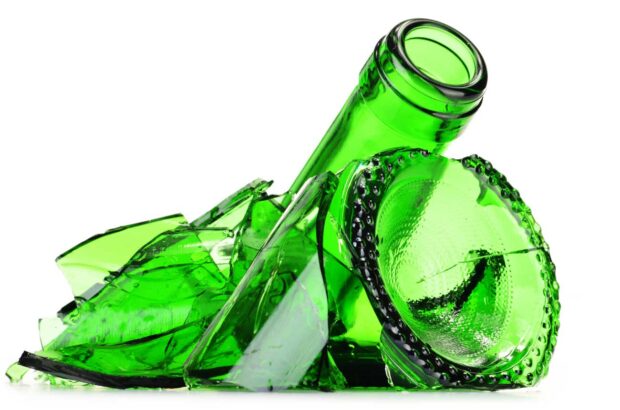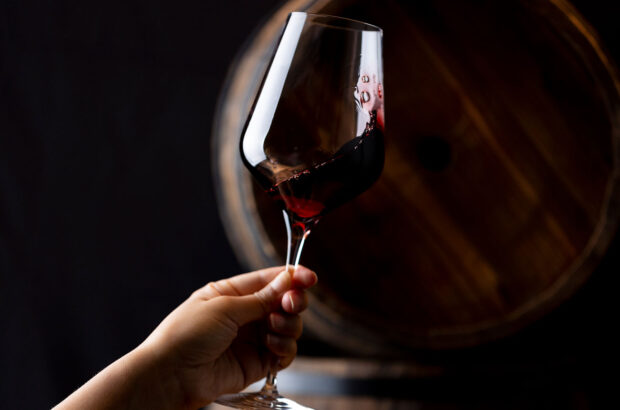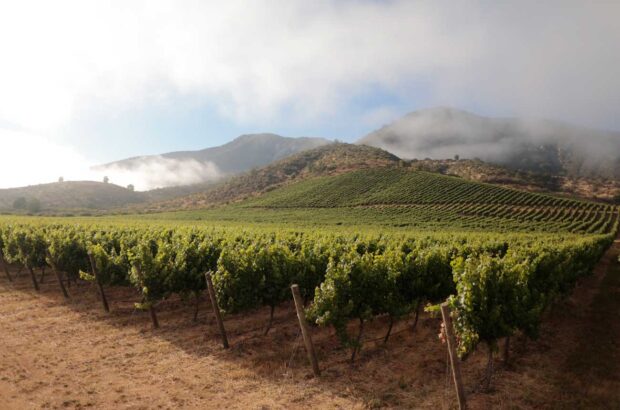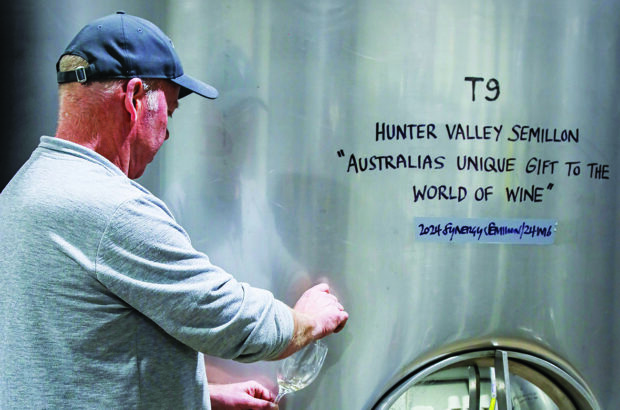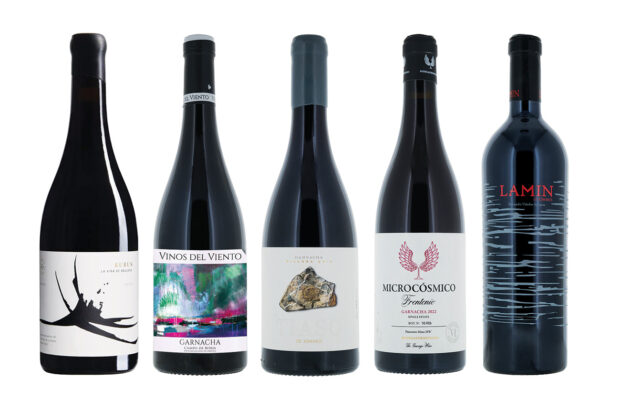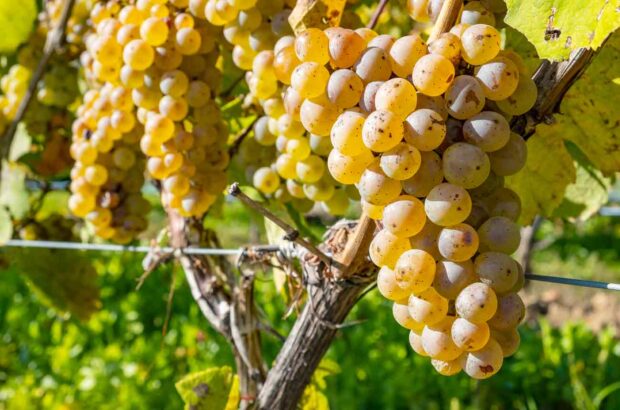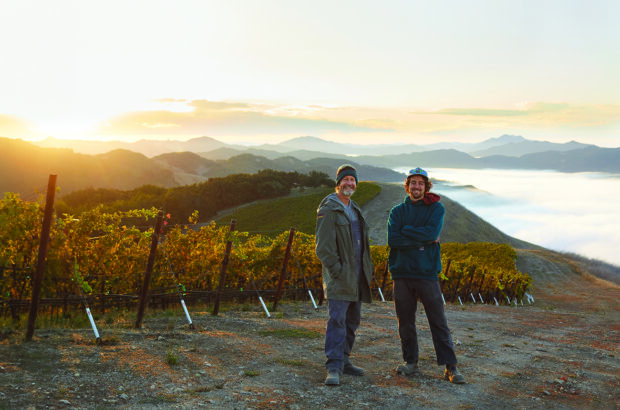- A dynamic village, impressively united in the pursuit of quality.
- A platform for progress.
- Better able to make their quality known.
- Natural treatment of the vines.
Everyone agrees. Cairanne is a wonderful place, an exemplary sort of spot. In Avignon, the regional wine authorities will tell you that Cairanne is exactly the type of place that a Côtes du Rhône village should be. At least two merchants have told me that the settlement near Orange stands well clear of the 15 other Côtes du Rhone villages entitled to put their names on their bottles. The French press says similar things – and the villagers themselves agree. This, of course, isn’t so surprising.
What is surprising is that they also praise each other. All the Cairanne wine producers I met had good words to say about all the others. Stranger still, the private producers were flattering about the local cooperative – and this in a country where the two camps are more usually planning to blow each other up. I was beginning to get suspicious. Then I talked to Thierry Mellenotte of the Rhône Valley Wine Trades Council. ‘Cairanne is a dynamic village, impressively united in the pursuit of quality,’ he said. I grew more suspicious still. The Trades Council has, after all, decided to put its weight behind Côtes du Rhone-Villages output this year. It’s their promotional focus and I was being set up to spread a good, Cairanne-based message. It was the only possible explanation for this utterly un-French display of mutual agreement.
Ha, I said to myself. I am no dupe. I went looking for faults. I have to say, though, that this proved a tough assignment. Even the carafe wine at lunchtime in Pascal’s village bistro was smoothly drinkable – a nice change from the barely diluted acid one generally encounters in such containers in and such surroundings.
And doubts about the 1997 vintage – lacking colour and concentration after over-persistent summer rain – turned out to be exaggerated. I cannot even say something gratuitously insulting like: ‘The village is ugly.’ It isn’t. The old part is perched on top of a hill, as Provençal villages are meant to be, looking over the plain to Mont Ventoux, the Dentelles de Montmirail and other fledgling Alps. Newer constructions, and the vineyards, fan out across the rocky, garrigue hillside down to the limestone-clay flatland where the Mistral would bend vines double if they weren’t wired up. ‘There are worse places to work,’ says Corinne Couturier at Domaine Rabasse-Charavin.
Indeed. Quite frankly, you would forgive rotten wine in such a setting. In the main, and maddeningly for our present purposes, you don’t have to. Back in the early 1950s, Cairanne was one of the first four Côtes du Rhône villages allowed to put its name on its wine labels – alongside Gigondas, Laudun and Chusclan. Subsequently, 13 other villages have joined the select group, while Gigondas and Vacqueyras have burst out of the top end to full cru status. If Cairanne hasn’t followed these two, it is in part because Cairanne folk see little in it for them except extra restrictions. ‘Better to be leaders where we are than start off at the bottom of the crus,’ was the verdict of British grower Nick Thompson at Domaine de l’Ameillaud. Cairanne as thus had its nose out in front for quite some time – but the real take-off came around 15 years ago. Sales which had once been automatic: ‘We produced and it sold,’ according to Vincent Delubac of Domaine Delubac – were no longer so. Scions of old Cairanne families – Corinne Couturier, the Alarys, Marcel Richaud – had the Mediterranean sun, the terroir and the old vines. They made a break for quality, if only to beat Côtes du Rhône’s persistent image problem in France. Not the least strange aspect of this story is that other village producers have followed suit – rather than standing on the sidelines and wishing the pioneers ill, the norm in such circumstances. ‘There was no point in being jealous. People saw success and emulated it,’ says Delubac. The whole village – 23 private producers and the coop, responsible for 80 per cent of Cairanne production – is apparently now a platform for progress.
Yields, already reduced to 42 hectolitres/hectare (hl/ha) for Cairanne wines, are often cut back further. Manual picking and in-cellar grape selection are becoming the norm. Traditional vinification, with foulage (the crushing of the grapes prior to fermentation), remains the staple, though certain operators – including the cooperative – prefer whole grape maceration for wines to be drunk younger. The use of wood – one of those issues about which Rhône wine commentators get terribly excited – is treated pragmatically. Newcomer Dominique Rocher at Domaine Rocher is not alone in thinking that the richness of the mix of grape varieties – essentially Grenache with Syrah and Mourvèdre – leaves little role for wood. Others employ it sparingly – the coop and the Astarts at Domaine les Hautes Cances, and Denis and Sabine Alary at Domaine Alary. Their standard Cairanne goes into old casks for six months on arriving at its first birthday.
‘It dissolves the tannins without giving a taste of wood,’ explains Madame Alary, and she is right. Indeed, nowhere did I bump into any oppressive taste of woodiness – though, my word, I looked for it. So what did I bump into? Well, everything I expect from southern Côtes du Rhône reds but more so – in the best examples, at least. Sabine Alary characterised her ideal Cairanne wine as being: ‘Not necessarily easy to approach; full-bodied, tannic, almost animal – a wine for game.’ Nick Thompson at l’Ameillaud spoke of: ‘Thickness, concentration, ageing potential, but also harmony – that’s where the real pleasure is.’ Taking these two views together, you can begin to discern the essential Cairanne scope. The annoying thing for fault-seekers is that so many of the wines hit the spot. You might not like the big taste but, if you do, they’ve got it – and at prices which don’t rise much above FF50 (£5).
The Alarys’ star is La Font d’Estevénas, softer and rounder than their standard Cairanne but still a mouthfiller and one that has the wherewithal to age for a decade. ‘Old vines,’ explained Sabine Alary, and when these people say ‘old’, they mean old: 50 to a 100 years for some Grenache, the backbone of these wines.
Up the hill at Domaine Rabasse-Charavin, Corinne Couturier says: ‘Our vines really need 30 years to develop their souls’. Madame Couturier is brisk and charming in equal measure. Her wines are the product of the celebrated old vines, minimal use of chemicals, low yields (average: 35 hl/ha) and traditional vinification. The vines are grown on clay-limestone slopes which, she reckons, endow Cairanne wines with greater subtlety than those from neighbouring Rasteau, where she also has vineyards.
Her Cuvée d’Estevénas (Estevénas is the hill on which we stood) nevertheless lacked nothing in the way of a smoky, gamey ripeness which rounded out wonderfully if you gave it time. Indeed, the best of Cairanne demands patience. This is the case of Nick Thompson’s Domaine de l’Ameillaud which, if simply uncorked and slugged back, tastes hard-edged. Treat it properly and it opens up, fills out and gets very near the harmony its maker talks about. Much the same is true of Delubac’s Authentique which, in its 1995 incarnation, develops a fruity, eau-de-vie nose backed up by a startling concentration. ‘Low yields are 80 per cent of our success,’ said Vincent Delubac. Then he took off his cap and grew reflective. ‘I don’t think Cairanne is necessarily superior to all the other villages,’ he continued, ‘But we have been better able to make our quality known.’
Certainly, this was a key factor in tempting Dominique Rocher to the village a little over a year ago. Rocher spent 19 years in London, 11 of them as owner of Monsieur Thompson’s (no relation) restaurant in Kensington Park Road. On returning to France, he studied viticulture, took a working wine tour of the world and fetched up in Cairanne, essentially because of its reputation for dynamism and quality. He’s now babysitting his first vintage and early indications are that it will have depth and roundness, despite running into Cairanne’s worst summer weather for four years. This, of course, is a generalised Cairanne concern, though no-one appears excessively depressed. According to Nick Thompson: ‘The grapes were unstable, with high pH levels, so the quality of the 1997 wine depends more than usually on the skill of the winemaker. It will be a softer, more commercial year and more rapidly drinkable. By no means a disaster.’ Rapidity is not the priority for Anne-Marie and Jean-Marie Astart, both doctors, who took over the old family Domaine Les Hautes Cances in 1992 and who now split their professional lives in two. They scarcely lessen their burden by insisting on natural treatment of their vines – and on doing everything by hand. Including bottling. It may be something to do with their medical training but doesn’t speed things up. The result at the top of their range is, though, the Cuvée Col du Débat – as full, supple and silky a wine as I tasted in Cairanne. And one which, alongside Grenache and Syrah, also boasts the much-maligned Carignan in the mix. ‘Carignan can do great things, if properly mastered,’ said Jean-Marie Astart.
Across at the coop, the approach is less artisanal – filling three million bottles by hand would test anyone’s idealism – but quality claims made on its behalf (see above) are not wishful thinking. Recent plant investment has been heavy and the full coop range, from vins de pays, up through the big-selling generic Côtes du Rhône, Signature, to the Cairanne Côtes du Rhône-Villages product repays investigation. At the top, the Cuvée Antique – with 20 per cent of the mix aged in new wood for three months and the whole bottle-aged for three years before sale – has the musk and spice aromas and headiness of taste which speaks well of Cairanne. Dammit. If one can no longer rely on the cooperatives to let you down, what is French wine coming to?


